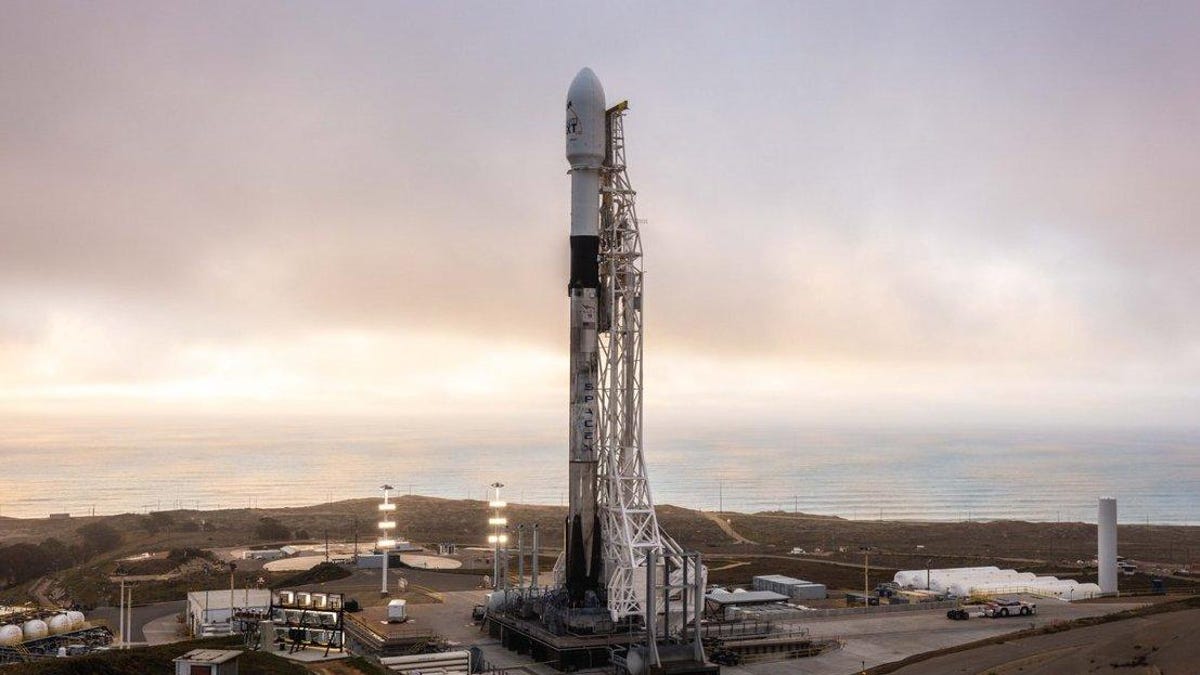More SpaceX firsts coming with next Starlink launch
Elon Musk continues to push the limits of space recycling while preparing to flood low-Earth orbit with satellites.

A Falcon 9 sits ready on the launchpad for a mission.
SpaceX is set to take its bold recycling initiative one step further next week. It plans to launch a batch of its Starlink broadband satellites aboard a Falcon 9 rocket that has previously flown three times and will use a fairing that flew in April.
Elon Musk's space company has been reusing its Falcon 9 boosters for a few years now, but the booster scheduled for launch Monday from Florida's Cape Canaveral will be the first to make four trips to space. And the fairing, also known as a nose cone, that protects the payload as it soars through the atmosphere will be the first to be recycled by SpaceX.
For some time already, SpaceX has been working on different ways of catching fairings as they fall back to Earth after launch, employing ships equipped with giant nets and fishing the nose cone halves out of the water.
The fairing that'll fly next week was used on the ArabSat-6A mission in April that saw a Falcon Heavy launch a huge telecommunications satellite.
The fairing supporting this mission previously flew on Falcon Heavy’s Arabsat-6A mission pic.twitter.com/iTgqqtl1pW
— SpaceX (@SpaceX) November 5, 2019
Reusing the different components of SpaceX's launch system is part of the company's drive to reduce the cost of getting to space, attracting more business in order to fund Musk's goal of making it to Mars. Ultimately, the next-generation Starship and Super Heavy booster the company is developing for Mars and beyond will be "fully reusable," according to Musk.
"With fairing recovery, Falcon is ~80% reusable, but reflight takes several days & requires boats," he wrote on Twitter on Monday. "Starship will be fully reusable with booster reflight possible every few hours & ship reflight every 8 hours. No boats needed."
The 60 Starlink satellites that'll be launched Monday are also an important part of the overall SpaceX business plan.
The company hopes to flood low-Earth orbit with up to 42,000 of the small satellites, wrapping the planet in a warm blanket of broadband access it aims to sell in coming years. Getting all those satellites to orbit will require hundreds if not thousands of launches, another reason SpaceX is looking to reuse as many components as possible, to tame the costs of starting up Starlink.
The audacious scale of Starlink has raised some concerns among astronomers and, notably, the European Space Agency, which had to perform an evasive maneuver to keep one of its spacecraft well clear of a Starlink satellite.
But SpaceX is proceeding with plans to loft its flying routers as rapidly as possible. The next Falcon 9 launch following Monday's Starlink mission is expected to be another batch of Starlink satellites.

